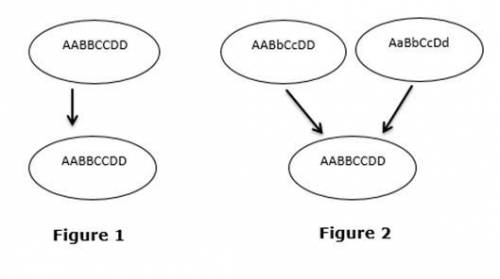
Biology, 30.03.2021 18:20, amandafutch24
A student creates the models pictured and claims they represent two types of reproduction.
Is it possible for the two figures to have the same outcome as indicated in the models? Why or why not?
A
No, figure 2 is sexual reproduction and the offspring should be different from the parent.
B
No, figure 2 is asexual reproduction and the offspring should be different from the parent.
C
Yes, figure 2 is asexual reproduction and the offspring is identical to the parents.
D
Yes, figure 2 is sexual reproduction and the offspring shows a combination of the parent traits.


Answers: 1
Other questions on the subject: Biology

Biology, 21.06.2019 23:30, desotoaustin
Examine the two squirrel populations in the accompanying figure. the populations are separated by a geographic barrier. if after a long period of time the two species are no longer separated, what evidence is needed to determine if speciation has occurred? the figure shows two populations of squirrels separated by a geographic barrier. examine the two squirrel populations in the accompanying figure. the populations are separated by a geographic barrier. if after a long period of time the two species are no longer separated, what evidence is needed to determine if speciation has occurred? the figure shows two populations of squirrels separated by a geographic barrier. polyploidy is creating new species. the two populations are not interbreeding freely. hybrid offspring of the two populations begin to appear. one species will increase into a population size twice as large as the other species.
Answers: 2


Biology, 22.06.2019 12:00, hipeople4904
Yeast cells reproduce quickly by budding. this is a form of reproduction so all the yeast cells a) sexual; vary b) asexual; vary c) asexual; are identical d) sexual; differ from the parents submit hint structures and functions of cells cellular reproduction
Answers: 1
Do you know the correct answer?
A student creates the models pictured and claims they represent two types of reproduction.
Is it po...
Questions in other subjects:

Mathematics, 15.09.2021 19:10


Business, 15.09.2021 19:10





Mathematics, 15.09.2021 19:10








